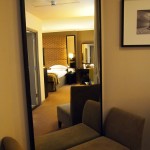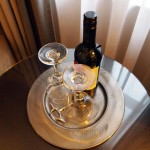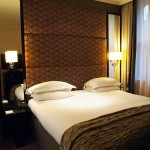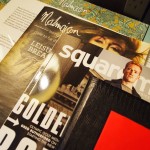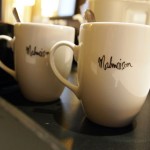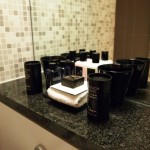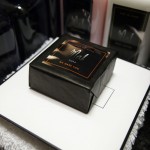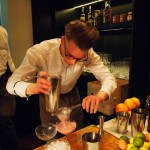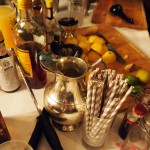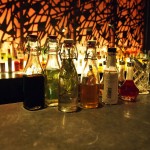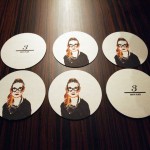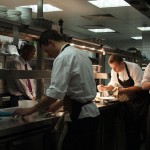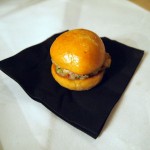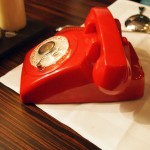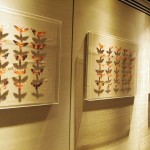Published on Life in Luxury on 22nd February 2013:
Tag Archives: Life in Luxury
Ten facts about Bo London
Published on Life in Luxury on 10th February 2013:
- Bo London is the first restaurant outside of Hong Kong for Alvin Leung, the chef/patron of the two Michelin starred Bo Innovation.
- The Mill Street site, based in the heart of Mayfair, reportedly costed Leung £1m to lease and fit.
- Wood reclaimed from renovations of the Bo London site has been fitted to one of the two semi-private dining rooms. The wood is protected behind glass made to the same shade as Leung’s glasses.
- Instead of an image of Alvin Leung, like outside Bo Innovation, Bo London has one of Leung’s hand holding his custom made knife.
- There are two kitchens. A classic Western-style one, including a pastry section, and a Chinese one with woks and steamers.
- There are two views into the kitchens – from the pass upstairs or the viewing window at the pastry section downstairs.
- For lunch, there is a selection of dim sums as well as the newly introduced ten course “Chefs” tasting menu. For dinner, there is only the 12-course “Ode to Great Britain” (comprised mostly of reinterpretations of British food) or the 14-course “Chefs” tasting menu (includes select dishes from Bo Innovation).
- The most famous dish on/off the menu is “sex on the beach”, Leung’s creation to raise money for AIDS charities.
- Abby’s sauce is made according to a recipe created by Leung’s wife.
- Those interested in trying the Chinese spirit baijiu will find a premium selection of three at the bar. As well as of course in the dessert by the same name.
Ten facts about Where Chefs Eat
Published on Life in Luxury on 29th January 2013:
- Where Chefs Eat is a directory of over 2,000 restaurants as recommended by over 400 of the world’s best chefs.
- There are recommendations are geographically arranged by continent: Oceania, Asia, Europe, Africa and North and South America, all mapped.
- There are also two indexes to help you navigate the book, by restaurant name or by recommendation type.
- For 26 selected cities, there are more detailed maps indicating the locations of the restaurants and in effect, turning the book into a local restaurant guide.
- Each of the 400 or so chefs involved has recommended a minimum of three restaurants according to the quality of food alone.
- The chefs were asked eight questions each: “Which restaurant do you eat at most regularly?”; “What’s your favourite place to go for breakfast?”; “Late at night where do you like to eat?”; “Which restaurant best sums up your city or region, a restaurant you’d consider a local favourite?”; “Where serves your favourite bargain meal?”; “Where do you go to celebrate a special occasion?”; “Which restaurant do you admire the most and wish you’d opened yourself?”; and “Which restaurant would you travel any distance to eat at?”
- It took 12 months to create, enlisting an editorial team of 25.
- Joe Warwick, who compiled the book, is the former editor of Restaurant Magazine who spearheaded the creation of the World’s 50 Best Restaurants Award.
- There are no rankings in this guide. Instead, the restaurants are categorised according to: “Breakfast”, “Late night”, “Regular neighbourhood”, “Local favourite”, “Bargain”, “High end”, “Wish I’d opened” and “Worth the travel”.
- Each restaurant listing includes address and contact information as well as opening hours, reservation policy, credit card, price range, style, cuisine and recommended for. Some also have quotes from chefs or short reviews.
Ten facts about vanilla from Pure Vanilla
Published on Life in Luxury on 15th January 2013:
Pure Vanilla provides an in-depth guide to vanilla including its species, origins, history and tasting notes. The author, Shauna Sever, is an American baking blogger and former investigative journalist and TV presenter.
There are 85 recipes in the book, split into six chapters (breakfasts, cakes and pies, cookies and bars, candies and confections, custards and creams, drinks), across 160 pages.
Here are a few facts about vanilla from the book:
- The Totonac Indians were credited as the first to discover vanilla. They then introduced their techniques for working with vanilla to their conquerors the Aztecs.
- Vanilla was produced exclusively in Mexico until 1836 when the secrets of its pollination was discovered. Before then, though vanilla plants grew in other parts of the world where it was transplanted, pods were never produced.
- Edmond Albius, the twelve-year-old son of a slave on the island of Réunion is credited with discovering the method of hand pollination which is still used in vanilla production today.
- When the vanilla plant flowers, the farmers have just 12 hours to hand pollinate each bloom to produce the seed pods.
- After hand harvesting, the vanilla pods must be killed (to stop their development), sweated (stored in a high humidity-environment), dried and then conditioned (to allow flavours and aromas to develop).
- Where vanilla production is particularly competitive, such as in Madagascar, the pods might be branded or “tattooed” at the green-pod stage to identify the producer and secure ownership.
- Today, vanilla is the most widely used flavouring and ingredient in the world. It’s allegedly even more popular than chocolate.
- Americans are responsible for consuming roughly half of all vanilla produced globally. Most of it is in ice cream and soft drinks but it’s also used to scent products and perfumes.
- Extracts, pastes, powders and ground beans are best stored in dark-coloured, tightly capped jars. Whole beans should be tightly wrapped in plastic wrap and then placed in a zip-top bag to retain moisture.
- Whole vanilla beans will keep for up to a year while extracts will keep for years. To revive dried vanilla pods, simply soak briefly in hot water.
